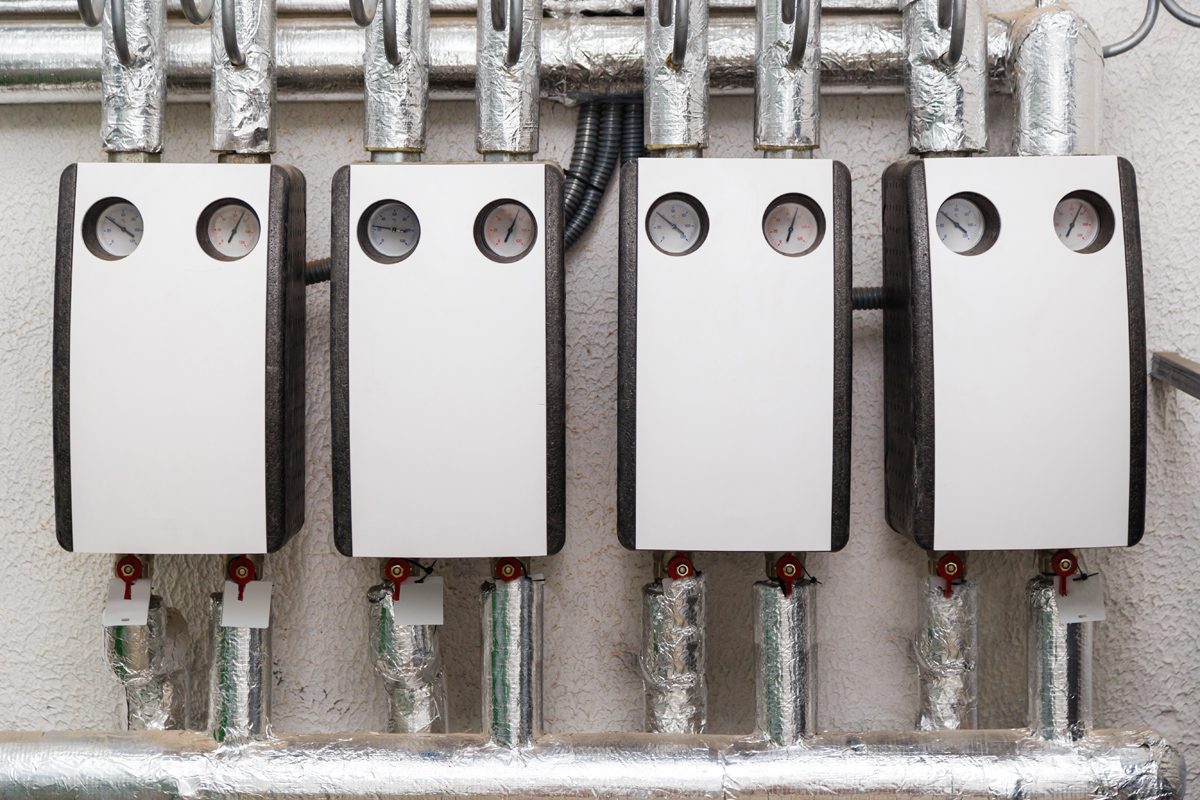Often placed atop a large building, cooling towers operate as large-scale heat exchangers. These models will blow air across coils to remove heat. Meanwhile, chillers are large pieces of industrial equipment found within a building.
How Do Cooling Towers And Chillers Work Together?
Together, both chillers and cooling towers make it possible to condition the air over large spaces. The evaporative cylinder produces the cold water necessary for air conditioning in the chilled water system. This chilled water (typically 45 degrees Fahrenheit), travels up the riser, bouncing off and into air handling units. The units will be located on several different floors throughout a commercial building.
This particular system will feature water flowing through a coil within the air handling unit, with indoor air blowing above it. The heat that is then transferred from air to water will leave cooler air to circulate throughout the building. This water is typically 55 degrees F after flowing out of the coil.
Condensed Water System
In this system, the condenser cooler is attached to the evaporative cylinder. This connection pushes the heat out of the evaporator and into the condenser. Somehow, though, these two lines never directly interact with one another. The condenser water is the warm water that will travel up to the riser, usually around 95 degrees F. The water heads to the cooling tower on the roof from that point on.
Once inside the tower, the condensed water flows throughout, all while fans pull in ambient air. This ambient air is used to transfer heat out of the water. Condenser water is then returned to the condenser cylinder 20 degrees cooler than when it entered the tower.
Sizes Of Chillers And Cooling Towers
Many cooling towers and chillers may be necessary depending on building size and layout. For example, many sites may include redundant systems used to prevent a building from going out of service simply if one part breaks down. This failsafe feature allows for maintenance and repairs to take place while in operation.
Differences Between Cooling Towers And Chillers
With chillers, heat is removed directly from the coolant, then transferred to the surrounding air. This process is essential for any cooling process. A cooling tower, meanwhile, is designed to remove heat from any water that is discharged from the condenser. If a factory, etc chooses the wrong type of application, it is likely that the area will not be properly cooled.
Chillers and cooling towers undoubtedly produce similar results, but slight differences between the two units are why they are used in different plants, factories, etc.
Cooling Tower Types
There are five common types of cooling towers, including:
- Counterflow Cooling Towers
- Crossflow Cooling Towers
- Forced Draft Cooling Towers
- Induced Draft Cooling Towers
- Factory Assembled Cooling Towers
Chiller Types
You will find two common types of chillers on the market today:
- Air-Cooled Chillers
- Water-Cooled Chillers
Where Are Cooling Towers Used?
Here are a few applications that utilize cooling towers:
- Oil and gas refining plants
- Thermal power stations
- Power plants near bodies of water
Where Are Chillers Used?
Chillers are used for many applications, including:
- Plastic-industry applications
- Microbreweries & wineries
- Water-jet cutting applications
Universal Tower Parts In Phoenix, AZ
Universal Tower Parts provides stainless steel and galvanized options, welded and gasketed, direct, gear reducer and belt drive units, with efficient Jedair fans, and Jedair low noise fans. Strainers, fan guards and louvers are well constructed, and designed to operate efficiently as they perform their function. Cool Core drift eliminators and fill are made by Universal Tower Parts expressly for our towers.





